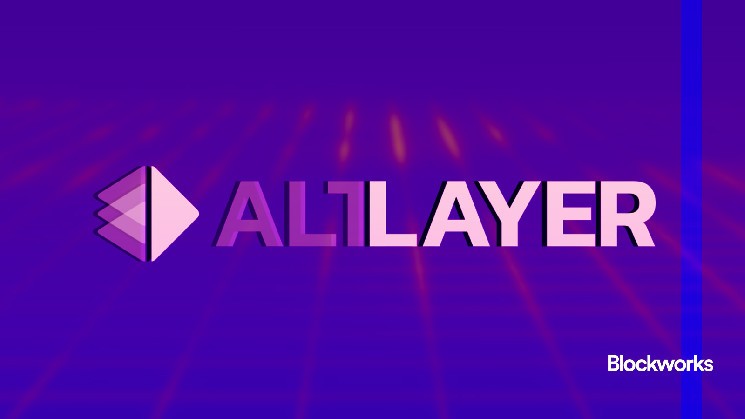AltLayer’s Wizard simplifies EigenLayer AVS deployment

AltLayer has introduced Wizard, a platform designed to simplify the deployment and management of Actively Validated Services (AVS) for developers working within the EigenLayer ecosystem.
The platform, which enters a public alpha phase Thursday, reduces the time to deploy AVS from months to minutes, according to development company Alt Research.
Wizard is a developer dashboard that aims to turn a complex, time-consuming process — deploying decentralized services — into something nearly instantaneous, much like what cloud computing did for server management.
Read more: Funding Wrap: Investors place more EigenLayer bets
It’s a level of automation that has been missing in the AVS space, helping developers focus more on innovation than infrastructure, according to Chief Operating Officer Amrit Kumar.
“You could basically have an end-to-end experience where you start with the rollup made through the dashboard as well, and then you come to this AVS part,” Kumar told Blockworks.
For example, a gaming focused rollup may need a Verifiable Random Function (VRF) service — a service that gives you randomness. They could simply select it in Wizard and have it applied to their rollup.
“You would say, ‘I want to have this VRF deployed for my game,’ and they could have them connected all through one single platform,” Kumar said.
An AVS consists of a decentralized network of operators that provide services such as sequencing, asset bridging and faster finality. Ethereum’s finality is considered to be two epochs, or about 13 minutes.
Supported by EigenLayer‘s restaking mechanism, AVS borrows security from Ethereum, ensuring reliability and safety.
Founded in 2021, AltLayer’s primary product is rollups as a service (RaaS), including restaking, to allow rollups to leverage Ethereum’s economic security. Competitors like Caldera and Conduit also provide RaaS solutions focused on simplifying the deployment of application-specific rollups.
While AltLayer emphasizes security through restaking, Caldera and Conduit offer customizable rollup frameworks that prioritize performance optimization and seamless integration with Ethereum and other layer-2 solutions.
Read more: AltLayer brings MACH to Arbitrum
Wizard simplifies the process by offering templates for common AVS configurations, reducing the complexity of setting up and managing these services. It’s part of the overall aim to help scale decentralized applications by automating rollup deployment and management.
“This AVS wizard basically allows people to deploy a different kind of AVS and experiment with them,” Kumar said. “And some of them could be useful for our rollups and others could be useful for us in the EigenLayer ecosystem more generally.”
He likens the evolution of AVS to the development of rollups — with some large general purpose ones like Arbitrum One and OP Mainnet, and many smaller application-specific rollups.
Like a forest of mushrooms after a heavy rain — popping up everywhere — from the massive optimistic “portobellos” to the quirky Web3 gaming “shiitakes.” They may look different, but they all thrive on the same fertile ground of Ethereum’s security — at least in theory.
“You will always have a general purpose AVS, and then you could have a customized version of that designed and deployed for a certain specific use case application,” Kumar said.
These niche deployments may have limited operator sets run by a project’s stakeholders, he noted — which might be one way to manage slashing risk.
Read more: EigenLayer’s biggest risk may be centralization, report suggests
“There could always be slashing depending on the use case, where you could have to say that, ‘if this thing happens, then your stake will get slashed by X percent,’” Kumar added.
Rollups deployed using AltLayer currently hold over $11 billion in total value locked (TVL), according to stats.altlayer.io.
YQ Jia, founder of Alt Research, called the past six months “a huge learning curve for AltLayer.” While deeply engrained in the work of EigenLayer from the beginning, he called it “an evolution period for this nascent but exciting restaking market as a whole.”



 Bitcoin
Bitcoin  Ethereum
Ethereum  Tether
Tether  Dogecoin
Dogecoin  USDC
USDC  Cardano
Cardano  TRON
TRON  Chainlink
Chainlink  Stellar
Stellar  Hedera
Hedera  Bitcoin Cash
Bitcoin Cash  LEO Token
LEO Token  Litecoin
Litecoin  Cronos
Cronos  Ethereum Classic
Ethereum Classic  Monero
Monero  Dai
Dai  Algorand
Algorand  OKB
OKB  Cosmos Hub
Cosmos Hub  Stacks
Stacks  Theta Network
Theta Network  Gate
Gate  Maker
Maker  KuCoin
KuCoin  Tezos
Tezos  IOTA
IOTA  NEO
NEO  Polygon
Polygon  Zcash
Zcash  Synthetix Network
Synthetix Network  Tether Gold
Tether Gold  TrueUSD
TrueUSD  Dash
Dash  Holo
Holo  Zilliqa
Zilliqa  Enjin Coin
Enjin Coin  0x Protocol
0x Protocol  Qtum
Qtum  Siacoin
Siacoin  Basic Attention
Basic Attention  Ravencoin
Ravencoin  Bitcoin Gold
Bitcoin Gold  Decred
Decred  NEM
NEM  Ontology
Ontology  DigiByte
DigiByte  Nano
Nano  Huobi
Huobi  Status
Status  Lisk
Lisk  Waves
Waves  Hive
Hive  Numeraire
Numeraire  Steem
Steem  Pax Dollar
Pax Dollar  BUSD
BUSD  OMG Network
OMG Network  Ren
Ren  Bitcoin Diamond
Bitcoin Diamond  Bytom
Bytom